Project Universe
Project Universe
Summary
Project Universe is an eclectic extended-reality open-source platform helping individuals, communities, humanity achieve and maintain indefinite self-sustainability anywhere on Earth and beyond our atmosphere packaged as a downloadable video game.
To you aka the player aka end user the game is a science fiction single-player to massively-multiplayer game set in humanity’s future following our first fleet of interstellar spacecraft.
Each player lives inside a customizable biodome graphically emulating anywhere on Earth or beyond similar to Star Trek’s holodeck, except the soil is real. The default living space is a 32*32 meter (aka 1/4 acre) by 9 meter tall room. A 32*32*1 meter slab of farmable soil lines the bottom. In the remaining 32*32*8 area you build the home of your dreams.
Hardware
Listed below is the computer hardware I use for gaming, game development, and 3D printing. Project Universe must initially be fully compatible with this hardware bare minimum.
- Items with clickable names = affiliate links = commission based income
- Items with (N/A) = no valid buy link available
- Items with (link) = non-affiliate buy link
Computer
- Case = Corsair Graphite Series 760T (link)
- PSU = Corsair TX750M Gold 750 W 80+ Gold (link)
- Motherboard = ASRock Z370 Taichi ATX LGA1151 (link)
- CPU = Intel Core i7-8700K (link)
- CPU Cooler = Corsair H100i v2 (link)
- GPU = Gigabyte WINDFORCE OC GeForce RTX 2080 SUPER 8 GB (link)
- RAM = G.Skill Trident Z 32 GB (2 x 16 GB) DDR4-3200 CL14 Memory (link)
- Storage = Samsung 980 Pro w/Heatsink 2 TB NVMe (link)
- OS = Microsoft Windows 10 Home 64-bit (link)
Accessories
- Display = Samsung 55” Class – 8 Series - 4K UHD LED LCD TV (link)
- Headset = SteelSeries Arctis Nova Pro
- Keyboard = Corsair K70 RGB RAPIDFIRE (link)
- Mouse = Corsair Dark Core Pro SE
- Mouse Pad = Amoysanli Aluminum Alloy Mouse Pad (link)
- Speakers = Creative Labs Inspire 5200 5.1 (N/A)
- Webcam = Logitech C922x Pro Stream (link)
- Controller = Elgato Stream Deck (link)
- Recording System = PreSonus AudioBox (N/A)
- Backdrop = Elgato Collapsible Green Screen (link)
- Mic Stand = Neewer Desktop Clamp Adjustable Suspension Boom (link)
- Microphone = Audio-Technica AE6100 (link)
3D Printers
Infrastructure
Digital
WIP DEV NOTE: Eventually adding Single Sign On (SSO) as much as possible so users don’t have to create multiple accounts to utilize Project Universe.
- shaostoul.com = hub of information via Namecheap Stellar Plus (USD$78.86/year)
- gitlab.shaostoul.com = game dev version control via Namecheap Quasar VPS (USD$155/year)
- docs.shaostoul.com = version controlled documentation via Github (free) (potentially obsolete due to gitlab)
- discourse.shaostoul.com = (currently not working) community forum via Discourse (free)
- discord.gg/9XxmmeQnWC = primary communication platform for developers via Discord (free)
Physical
Software
Listed below is the software utilized in Project Universe’s creation.
Game Engine
Dev Tools
Artificial Intelligence (AI)
Game
Graphics
During development we’re aiming for ultra low resolution textures utilizing simple naming schemes minimizing the game’s size. High resolution textures can be generated procedurally and handmade later.
Physics
We’re aiming for mostly realistic physics, but some level of simplification is required for performance.
Perspectives
- First person
- camera is from the player’s eyes or attached to their outfit, like a body cam.
- Second person
- camera is from another character’s perspective, such as Lakitu from Super Mario 64 following the player around.
- Third person
- camera is free floating around the character not attached to another entity, typically over the shoulder.
- Top down
- camera is free floating above the play area facing downwards, typically used in real-time strategy games such as Command and Conquer.
- Isometric
- camera is similar to top down, but the play area is 2D such as Super Mario 3D, Dwarf Fortress
- Orthographic
Graphic User Interface (GUI)
First-Person
These are default settings for keyboard and mouse gameplay; location and scale should be customizable to fit your preferences. Please note this is a rough draft, exact design will change as gameplay develops.
- Top left = Quest log
- Top center = Compass
- Top right = Mini map
- Center left = TBD
- Center center = Aiming crosshair
- Center right = TBD
- Bottom left = Text chat
- Bottom center = Health and 10 key hotbar
- Bottom right = Ammo and equipment
Gameplay
Project Universe combines many forms of gameplay which simultaneously function independently and together. Each provides virtual training for real-life skills helping users achieve and maintain indefinite self-sustainability via homesteading.
Agriculture
By constantly developing our agricultural knowledge and technology we’ve been able to grow to a civilization eight billion strong. On an individual level we can produce more than enough resources on roughly a quarter acre to feed, cloth, and house ourselves indefinitely; this is why the default player home is a quarter acre by default.
Building
Crafting
Mining
Exploration
Expeditions
Defense (interior)
Defense (exterior)
Technology
- Machines
- Simple machines
- Compound machines
- Complex machines
- Electrical machines
- Mechanical machines
- Hybrid machines
- Tools
- Hand tools
- Power tools
- Diagnostic tools
- Measurement tools
- Information tools
- Protective tools
- Apparel
Player
Please note these are default values.
Species
- Human
- For initial development players are restricted to playing as humans, but we want to eventually allow the ability to play as other species.
Height
- Standing = 69 inches
- Crouching = 34.5 inches (~50% standing height)
- Prone = 10.35 inches (~15% standing height)
Movement
- Sprint = 20 mph
- Run = 15 mph
- Walk = 4 mph
- Crouch Walk = 1.5 mph
- Prone Crawl = 0.7 mph
- Standing Jump Height = 3.5 feet
- Sprinting Jump Height = 6 feet
Weight
- Default player weight = 150 lbs
- Default carry capacity (light) = 50 lbs
- Default carry capacity (medium) = 100 lbs
- Default carry capacity (heavy) = 150 lbs
- Default carry capacity (max) = 200 lbs
Environment
Galaxies
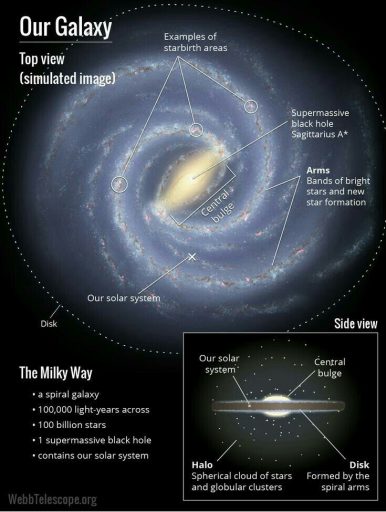
- Eventually we want to create traversable galaxies like the Milky Way.
Solar Systems
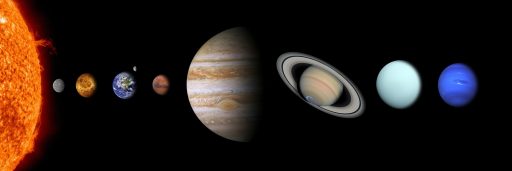
- Initially we’re creating traversable solar systems, starting with ours.
- Must support true 1:1 scale and be easily rescalable.
- Tools for creating/modifying solar systems must be as streamlined as possible.
- Solar systems must use the least amount of storage space as possible.
- Must be able to add infinite complexity to any solar system.
Planets
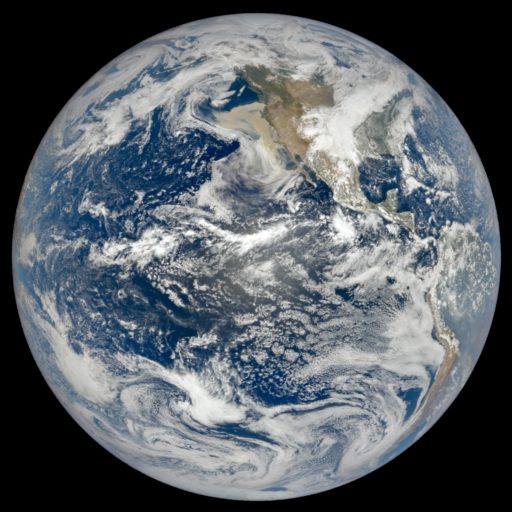
Homeships
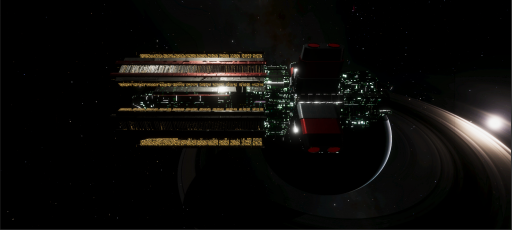
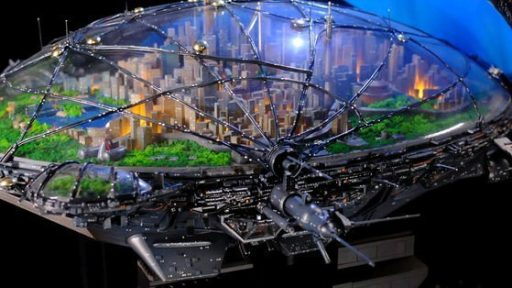
By default players are crew members living aboard homeships; massive spaceships providing a mutually supportive living space for residents traveling the vast distances between stars for untold generations on their mission to explore and colonize the universe.
Homeroom
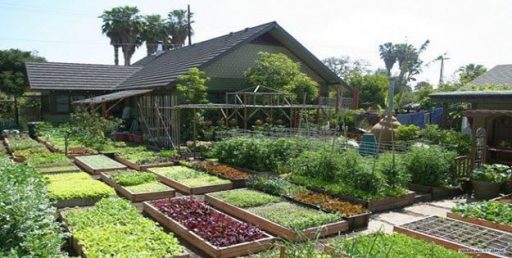
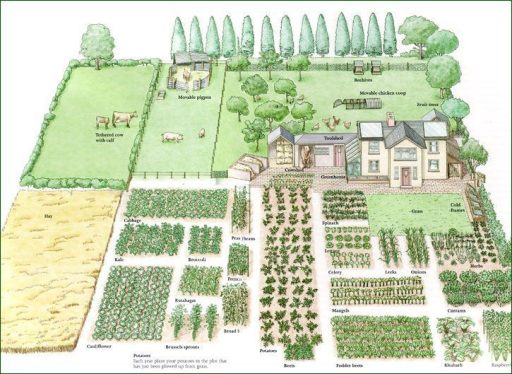
Located somewhere within a homeship is the player’s living space
- Default homeroom size
- 32*32*9 meter steel biodome (about a quarter acre)
- 32*32*1 meter slab of soil lines the bottom
- 32*32*9 meter steel biodome (about a quarter acre)
- Default atmosphere (Earth-like)
- 78.08% nitrogen
- 20.95% oxygen
- 0.93% argon
- 0.04% carbon dioxide
- 0.69% water vapor
- Default gravity (Earth-like)
- 9.81 m/s²
Graphically the walls and ceiling should be customizable similar to Star Trek’s holodeck where the player’s home can visually appear anywhere, such as a lake side view of mountains, but be physically restricted to the 32*32*9 area. Alternatively the walls/ceiling can be rendered transparent to see whatever is visible around the ship, IE: planets, asteroids, ships, etc.
Needs
Basic
- Air
- Water
- Food
- Shelter
- Energy
- Health & Medicine
- Safety & Security
- Social & Psychological Needs
- Transportation
- Education & Training
- Research & Innovation
- Communication
- Trade & Barter
- Ecosystem & Environment Management
- Cultural & Spiritual Needs
Resources
Goods
- Tools
- Computers
- Books
- Notepads
- Cell phones
- Containers
- Laptop bags
- Water bott`les
- Decor
- Desks
- Lamps
- Beds
- Weapons
- Guns
- Ammo
- Explosives
- Clothing
- Shirts
- Pants
- Jackets
- Cutlery
- Plates
- Bowls
- Spoons
- Forks
- Vehicles
- Scooters
- Hovercraft
- Tanks
- Spacecraft
- Cars
Services
- Computer repairs
- Meal deliveries
- Air conditioning installations
- Tutoring
- Waste collection
- Transportation
- Events management
- Internet access
- Massages
- Dry cleaning
Objective
Assist and educate players on achieving and maintaining self-sustainability via homesteading within the context of a futuristic interstellar journey.
Setting
The vastness of space aboard a fleet of interstellar spacecrafts, where humanity is on a quest to colonize the galaxy.
Core Gameplay Loops
Resource Collection
- Farming: Planting, cultivating, and harvesting crops for food and crafting materials.
- Mining: Extracting minerals or other resources aboard the ship or on planets.
- Scavenging: Finding and collecting unused or discarded materials.
Production & Refinement
- Crafting: Converting raw materials into tools, weapons, clothes, and other essentials.
- Building: Constructing structures, interiors, and expanding personal space.
- Tool/Machine Building: Creating devices to help in refining and producing goods.
Maintenance & Upkeep
- Ensuring health and well-being: Eating, sleeping, and ensuring mental health.
- Repairing: Fixing tools, machines, and structures.
- Upgrading: Improving tools, expanding living space, and enhancing machines.
Education & Skill Building
- Learning: Accessing in-game resources to learn about various skills.
- Practicing: Applying what’s learned to improve efficiency and gain expertise.
- Teaching: Sharing knowledge with other players to foster community growth.
Social Interaction & Trade
- Bartering: Trading goods and services with other players.
- Collaborative tasks: Working with other players on larger objectives or challenges.
- Community building: Forming alliances, guilds, or communities for shared benefits.
Key Features
- Dynamic Homestead System: Players can decide how they utilize their living space.
- Real-world Science Integration: Use of real-life agricultural, architectural, and engineering knowledge to make the game as educational as possible.
- Skill Trees: As players progress, they can specialize in specific areas of homesteading.
- Procedurally Generated Challenges: Random events like space anomalies, pests, or diseases to keep gameplay interesting and challenging.
- Narrative Quests: Story-driven missions that revolve around the overarching goal of colonization and the individual challenges of interstellar life.
Monetization
- Cosmetic items for players’ personal space.
- Advanced tools or machines (non-pay-to-win).
- Expansion packs or DLCs with new challenges, story arcs, or ship upgrades.
Educational Aspects
- In-game Library: A resource center where players can learn about various sustainability topics in-depth.
- Workshops: Virtual classes or sessions where players can learn from experts.
- Mentorship System: Experienced players can guide newcomers, fostering community and shared learning.
Target Audience
- Humanity.
- People interested in self-sustainability.
- Sci-fi enthusiasts.
- Those seeking an educational yet entertaining gaming experience.
Entities
Astronomical Objects
Universe • An infinitely large space where everything exists.
Galaxy • Vast systems consisting of stars, star clusters, planetary systems, interstellar gas and dust, and dark matter, all bound together by gravity; often featuring a central supermassive black hole.
Solar System • Objects typically made of one or more stars and/or black holes orbited by planets, dwarf planets, asteroids, and comets.
Supermassive Black Holes • Extremely massive black holes typically found at the centers of galaxies >100,000 solar masses.
Black Holes • Objects whose gravity is so strong that nothing, not even light, can escape. The minimum size of a hydrogen fusing star is ~80 Jupiter masses, the Schwarzschild radius of a black hole born from this star would be ~2.26 kilometers.
Star • Objects whose mass are capable fusing hydrogen (>80 Jupiter masses.)
Brown Dwarf • Objects whose mass are incapable fusing hydrogen (>80 Jupiter masses,) but capable of fusing deuterium (<13 Jupiter Masses).
Gas Giant • Objects whose mass are incapable of fusing deuterium (<13 Jupiter masses) but greater than 10 Earth masses.
Terrestrial Planet • Objects whose mass are incapable of fusing deuterium (>13 Jupiter masses,) with sufficient self-gravity to pull themselves into a mostly spherical shape, and have cleared their neighboring region of planetesimals.
Dwarf Planets • Objects with insufficient mass for their self-gravity to form a mostly spherical shape (>400 kilometers,) hasn’t cleared its neighboring region of planetesimals, and isn’t the satellite of a planet.
Asteroids • Rocky/metallic objects whose radius is >1 meter with insufficient mass for their self-gravity to form a mostly spherical shape (<400 kilometers) and is not a comet.
Comets • Objects whose radius is >1 meter consisting mainly of ice, dust and gas smaller than (<400 kilometers) typically forming a coma and tail while close enough to a star.
Meteoroids • Objects whose radius is <1 meter.
Lifeforms
Identity
- Singular Name • Human
- Plural Name • Humans
- Origin • Milky Way Galaxy, Sun (Solar System), (Planet) Earth
- Default Height • 69 inches
- Default Weight • 150 pounds
- Default Body Fat • 20%
Body parts
- Head
- Hair • color (#fafabe) • style (#042)
- Ears • style (#033)
- Eyebrows • color (#fafabe) • style (#021)
- Eyes • color (#a1d1f1) • pupillary distance (63 mm)
- Nose • style (#017)
- Mouth • color (#d3aeaa) • style (#05)
- Neck • circumference (15 inches)
- Trunk
- Collar
- Chest • circumference (38 inch)
- Waist • circumference (34 inch)
- Pelvis • circumference (38 inch)
- Sex
- Default • no genitals
- Male • penis
- Female • vagina
- Sex
- Left/Right
- Arm
- Shoulder • width (21 inches)
- Upper Arm
- Elbow
- Forearm
- Wrist
- Hand
- Palm
- Thumb
- Index Finger
- Middle Finger
- Ring Finger
- Pinky Finger
- Leg
- Hip • circumference (38 inch)
- Thigh
- Knee
- Shin
- Ankle
- Foot • size (US9.5)
- Sole
- Big Toe
- Index Toe
- Middle Toe
- Ring Toe
- Pinky Toe
- Arm
WordPress Formatting
Heading 1 ~ 5rem
Body ~ 2rem
Heading 2 ~ 4.5rem
Body ~ 2rem
Heading 4 ~ 4rem
Body ~ 2rem
Heading 4 ~ 3.5rem
Body ~ 2rem
Heading 5 ~ 3rem
Body ~ 2em
Heading 6 ~ 2.5em
Body ~ 2rem